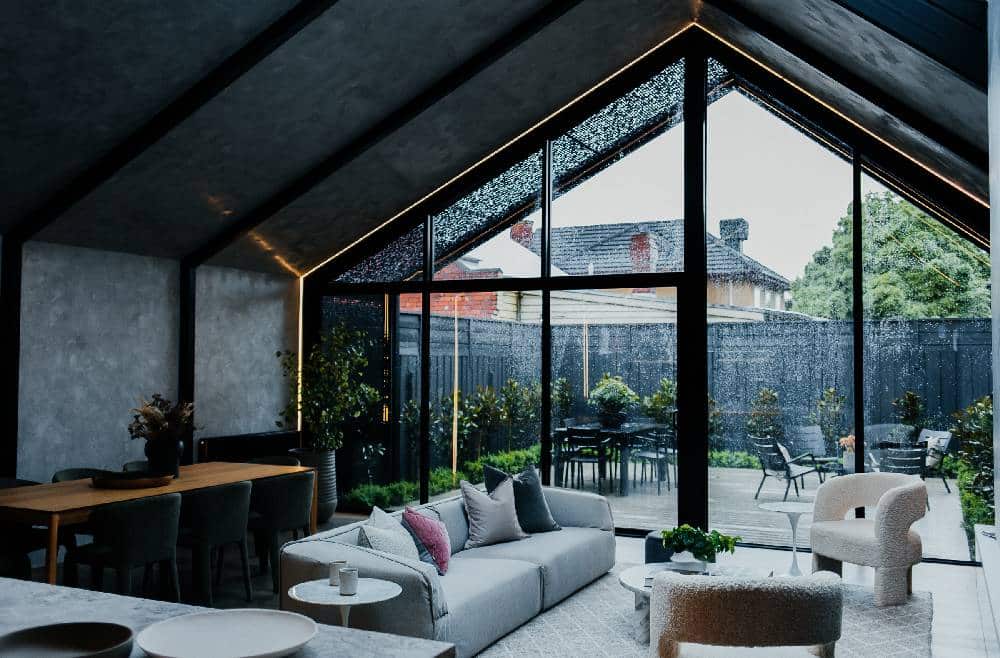When it comes to choosing the perfect wall plaster, it is crucial to consider aesthetics and functionality of the home. Traditional and Venetian plaster stand out as top contenders in the plastering industry, among numerous options available.
In this comprehensive guide, we will walk you through the essential differences between these highly prominent Venetian and Traditional plasters. But before diving into the comparison, let’s first understand what Venetian Render and Traditional Plaster are all about.
Venetian Plaster
Venetian plaster is often known as polished plaster made of a blend of slaked lime putty, limestone dust, and finely crushed marble dust. In modern applications, some variations incorporate acrylics and resins with low VOCs to enhance performance and environmental sustainability. Venetian plaster can create an extensive range of textures and shades that perfectly match specific design requirements, using additives and coloured pigments.
Venetian plaster is highly venerable for its rich appearance and artisanal adeptness. This premium decorative material is well-known for its luxurious finish and is available in three different grain sizes: fine, medium, and coarse. Each grain size contributes to the plaster’s unique texture and aesthetics.
It enhances the visual appeal of a space and ensures a durable, high-quality finish. Venetian Render is a perfect blend of timeless elegance and exceptional technical performance.
Traditional Plaster
For many centuries, Traditional plaster has been a stalwart of building materials. This tried-and-true mixture combines gypsum or lime with water, horsehair, and sand. The result? A powerful and versatile material that suits a range of surface finishes. Its durability and durability is the reason this material has been the primary choice for countless generations.
One of the standout features of traditional plaster is its thickness. This isn’t just for show; it provides excellent sound insulation, making it a feasible option for creating peaceful spaces. Moreover, traditional plaster is environmentally friendly. It’s completely recyclable and can absorb carbon dioxide (CO2) from the atmosphere, which contributes to its eco-friendly characteristics.
It doesn’t release harmful toxins and is safe for both indoor and outdoor applications. Traditional plaster is a great choice for preservation and restoration projects, as its finishes seamlessly align with the integrity and historic characteristics of the buildings. It doesn’t release harmful toxins like other modern materials and is safe for both indoor and outdoor applications.
| Criteria | Traditional Plaster | Venetian Plaster |
| Composition | Gypsum, water, sand, and horse hair sometimes. | Limestone dust, slaked lime putty, crushed marble dust, coloured dyes, additives and sometimes resins/acrylic. |
| Applied To | Ceilings, exterior walls, restoration or preservation projects. | Interior, feature areas, columns, office spaces, ceilings, and some wet areas. |
| Compatible with Surfaces Like | Partitions, timber-framed walls, concrete, gypsum board, stone, and brick. | Tiles, timber panelling, plaster boards, bricks, and dry walls. |
| Durability | Less durable and resilient compared to Venetian plaster. | More durable and resilient compared to Traditional plaster. |
| Range of Colour | Offers a limited colour option with fewer shades and tones. | Can create a great flexible range of colours using water-based pigments. |
| Finishes | Offers limited finishing options like smooth, textured, stucco, sand finish, and scratch coat. | Offer almost countless finish options, as many as you think, across textured, Matt, and glossy. |
| Technical Performance | It is not very flexible, may lead to cracking and is less breathable. | Super durable, highly resistant to wear & tear, anti-fungicidal, anti-bacterial. |
| Maintenance | Required more frequent repairs. | Absolutely hassle-free to clean and easy to maintain. |
| Time to Apply | Consumes less time to apply. | Highly skilled professionals are required and consume more time due to the complexity. |
| Cost | Lower material costs, labour costs, and installation costs. | Higher labour costs as it needs skilled professionals, as well as higher installation and material costs. |
| Maintenance Cost | Higher as it may require frequent repairing. | Lower as it requires long-term maintenance. |
| Overall Cost | Lower initial costs. | Higher upfront costs but cost-effective in the long run. |
Traditional plaster and Venetian plaster adds a significant amount of hardness, resilience, and a touch of elegant finishes tailored to the plaster compositions. However, if you are looking for a building material without breaking the bank, traditional plaster is the ideal choice. If you are looking for contemporary aesthetics, lasting durability, visually stunning appearance, and robust performance, Venetian plaster is the most reliable solution.
Are you planning to enhance the beauty of your home interior or ceilings?
With a rich history of experience, Melbourne Artisan possesses extensive expertise in application of Venetian plastering in Melbourne. Our team of plasterers are highly skilled and has hands-on experience handling large-scale Venetian rendering projects across a diverse range of colour, textures, and complexity.

